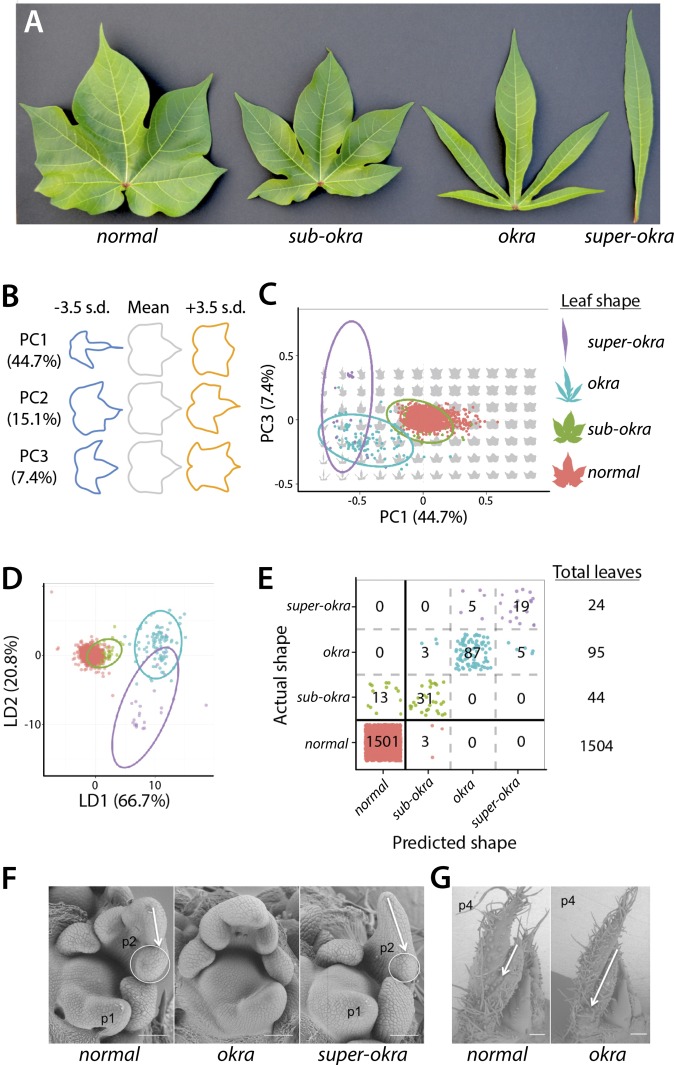Fig. 1.
Morphometric analysis of leaf shapes conferred by the subokra, okra, and superokra mutations. (A, Left to Right) Leaves representative of normal, subokra, okra, and superokra leaf shape phenotypes. (B) Eigenleaves representative of leaf shapes found ±3.5 SDs along each Principal Component (PC) axis calculated from the harmonic series of an EFD analysis. (C) Percent variance explained by each PC is provided. PC1 and PC3 (PC2 not shown, as it explains asymmetric shape variance) separate normal and various okra leaf shape classes. Also provided are 95% confidence ellipses. (D) LDA maximizes the discrimination of normal and okra leaf shape classes. LD1 and LD2 are shown, and the percent separation between phenotypic classes of leaves is indicated. Also provided are 95% confidence ellipses. (E) A confusion matrix, showing actual versus predicted leaf shapes, constructed using linear discriminants. Leaf shape alone discriminants a majority of normal from subokra, okra, and superokra leaf types. (F) SEMs of the SAM, P1, and P2 leaf primordia for normal, okra, and superokra shoot apices. Note the displaced lobe in the P2 of superokra relative to normal. (G) SEM of normal and okra shoot apices showing a more pronounced leaf lobe present by the P4 stage of leaf primordium development in okra relative to normal. Colors, normal, red; okra, blue; subokra, green; superokra, purple. [Scale bar, 100 μm (F) and 200 μm (G).]

